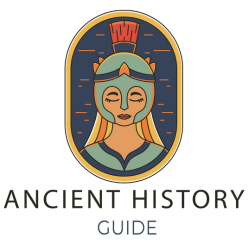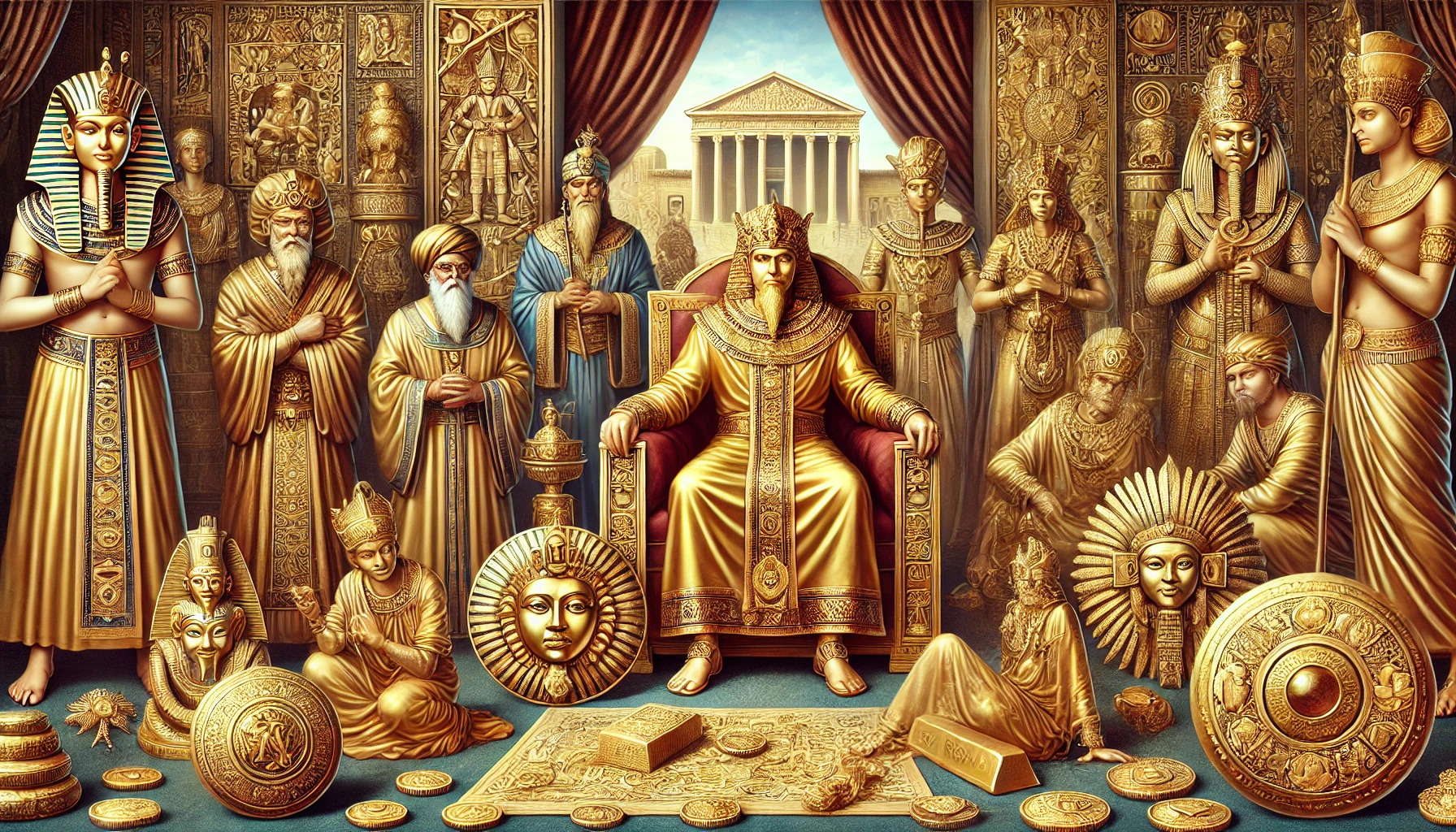Gold has captivated human imagination for centuries, symbolizing wealth, power, and beauty. In ancient societies, gold played a crucial role not just as currency but also as a representation of social status and divine connection. It adorned temples, tombs, and jewelry, reflecting both the riches of empires and the spiritual beliefs of their people.
Various civilizations recognized gold’s unique qualities, leading to its widespread use in art and commerce. In Egypt, for example, gold was both a medium of exchange and a vital element in funerary practices, meant to accompany the dead in the afterlife. Similarly, cultures like the Greeks and Romans utilized gold to signify authority and prosperity.
Exploring the significance of gold reveals much about the values and priorities of ancient peoples. Understanding how gold shaped economies and cultures provides valuable insight into the legacies they left behind.
Historical Context of Gold
Gold has held a significant place in human history, influencing trade, culture, and society. From early discoveries to its prominent role in ancient civilizations, gold’s value has been consistent.
Early Discoveries and Uses
Gold was one of the first metals used by humans. Archaeological finds suggest that it was known and used as early as 4000 BCE. The lustrous yellow metal was often found in riverbeds and easily shaped for various purposes.
Early societies used gold for making decorative items and jewelry. Its rarity and beauty made it an appealing choice for personal adornment.
Gold was also used in trade and as a form of currency. People quickly recognized its value, which led to the establishment of gold coins, facilitating commerce between cultures.
Gold in Ancient Egypt
In Ancient Egypt, gold was more than just a metal; it was a symbol of the divine. The Egyptians believed that gold was the flesh of the gods. This belief led to its exclusive use in religious artifacts and royal tombs.
Pharaohs were often buried with gold items to ensure a safe passage to the afterlife. Tombs, like that of Tutankhamun, revealed stunning gold funerary items.
Gold jewelry was also worn by the living, showcasing wealth and status. It played a major role in social hierarchy and was often given as rewards or offerings to deities.
Gold in the Incan Empire
The Incan Empire viewed gold as a sacred metal. They referred to it as the “sweat of the sun.” This deep reverence resulted in gold being used primarily in religious rituals and temple decorations.
Incas crafted intricate gold objects, showcasing remarkable artistry. They created not only jewelry but also masks and ceremonial items.
Gold was integral to the Incan economy. It was utilized in trade, and the empire hoarded vast quantities as a symbol of power. The Spanish conquest resulted in significant changes, as they exploited the wealth of gold for their own gain.
Cultural Significance
Gold held a deep cultural significance in ancient societies. It was more than just a precious metal; it symbolized power, wealth, and spiritual connection. Different cultures used gold in various ways, influencing their traditions and beliefs.
Symbols of Power and Wealth
In ancient civilizations, gold was a clear marker of power and wealth. Kings and rulers often adorned themselves with gold jewelry to showcase their status. For instance, Egyptian pharaohs used gold to symbolize divine authority.
Gold’s bright luster and rarity made it desirable. Societies linked the metal with the sun, connecting it to life and prosperity. Those who possessed gold enjoyed immense respect and influence, shaping social hierarchies.
Religious Artifacts and Offerings
Gold played a key role in religious practices. Many cultures created gold artifacts for temples and rituals. In ancient Egypt, gold statues of deities and offerings were common in temples.
These items symbolized purity and the divine. They represented a direct connection to the gods. Offerings of gold were believed to earn favor and blessings, emphasizing the metal’s spiritual importance.
Burial Rites and the Afterlife
Gold was also heavily featured in burial customs. Many ancient societies believed in an afterlife where material goods were needed. For instance, in ancient Egypt, tombs were filled with gold items for the deceased.
This practice was thought to ensure comfort and wealth in the afterlife. Items like gold masks and jewelry accompanied the dead. These rituals highlighted the belief that gold would assist in the journey beyond this life.
Economic Impact
Gold played a crucial role in the economies of ancient societies. Its value influenced trade, helped accumulate wealth, and became an essential part of currency systems. Understanding these aspects reveals how gold shaped interactions and economies throughout history.
Trade and Commerce
Gold was a key asset in trade networks. Ancient civilizations, such as the Greeks and Romans, used it to facilitate transactions, which helped boost commerce. Its high value made it a preferred medium for exchanging goods.
Merchants would travel great distances to acquire gold. This created extensive trade routes, connecting different cultures and fostering economic growth. Gold became a standard that ensured fairness in trading, as everyone understood its worth.
Wealth Accumulation
In ancient societies, gold was a symbol of wealth. It was often hoarded by elites and used to display power and influence. This accumulation of gold allowed families and leaders to secure status in their communities.
Gold items, like jewelry and ornaments, not only served as decoration but also as investments. Wealthy individuals ensured their power through ownership of gold, making it a form of security against economic instability.
Currency and Coinage
The introduction of gold coins changed the way people used currency. The first known coins were made from electrum, a natural alloy of gold and silver, used by the Lydians in the 7th century BCE. This innovation simplified trade.
Gold coins provided a reliable system of exchange. They allowed for standardized values, making transactions easier and more efficient. As civilizations grew, gold remained a trusted form of currency, influencing economic systems for centuries.
Mining and Production Techniques
Gold played a significant role in ancient societies, leading to the development of various mining and production techniques. Different civilizations adapted unique methods to extract and purify gold, fueled by their cultural values and technological advancements.
Ancient Mining Methods
Ancient civilizations used several methods to extract gold. They often began by panning for gold in riverbeds, where they could find alluvial gold. This was a simple approach, requiring only a pan and some water.
In addition to panning, mining groups dug shallow pits and tunnels to reach gold deposits in the earth. The oldest known underground mine is located in Swaziland and dates back over 40,000 years. Various cultures, such as the Egyptians and Greeks, also built structures over gold veins to facilitate their excavation.
Gold Purification Processes
Once mined, gold required purification to remove impurities. One common ancient technique involved the use of fire, where gold nuggets were heated to melt the metal and separate it from other materials. This method was effective, but it also required skill to avoid losing gold in the process.
Another common process was the use of mercury. Miners would mix gold ore with mercury, forming an amalgam that could be heated to separate pure gold. This technique allowed for higher recovery rates, though miners had to handle mercury carefully due to its toxic properties.
Innovations in Gold Production
Throughout history, various innovations enhanced gold production. The Greeks and Romans pioneered the use of hydraulic mining, which involved diverting water to wash away soil and reveal gold underneath. This method was particularly efficient in regions with abundant water supply.
In addition to hydraulic methods, the introduction of stamp mills allowed for the crushing of gold ore into finer particles. This improved the extraction process, making it easier to separate gold from the waste rock. These innovations greatly increased gold production and played a crucial role in the economies of ancient societies.
Gold in Mythology and Art
Gold has long been intertwined with human creativity and belief. Its unique properties have inspired stories and influenced artistic expression in various cultures. This section explores the myths surrounding gold, its representation in sculptures and paintings, and its impact on literature and language.
Myths Surrounding Gold
Many cultures developed rich myths about gold. In ancient Egypt, gold was associated with gods, particularly the sun god Ra. It was seen as the flesh of the gods and believed to hold divine properties.
In Greek mythology, King Midas had a wish to turn everything he touched into gold, which ultimately became a curse. This story emphasizes the allure and danger of wealth.
The Aztecs also revered gold, believing it was a gift from their sun god. These myths show how gold represented both power and peril across different civilizations.
Representation in Sculpture and Painting
Gold has played a significant role in sculpture and painting throughout history. In ancient Egypt, artists used gold leaf to adorn the tombs of pharaohs. This gave an air of divinity and immortality to their works, reflecting the culture’s beliefs.
Greek sculptures often featured gold elements to convey wealth and power. Statues of gods and leaders included gold plating, enhancing their greatness.
In the Renaissance, artists like Titian used gold backgrounds in their paintings to create a sense of luxury and importance. Gold remained a popular choice for artists wanting to symbolize prosperity and excellence.
Influence on Literature and Language
Gold’s cultural impact extends to literature and language. Many expressions and idioms derive from its value. For example, “heart of gold” suggests kindness and generosity.
Classical literature is filled with references to gold, often symbolizing wealth, greed, or divine favor. Works such as “The Gold-Bug” by Edgar Allan Poe highlight the obsession with gold.
In poetry, gold often represents beauty and perfection. The romantic imagery surrounding gold offers writers a powerful tool to evoke strong emotions and convey deeper meanings.
Role in Social and Political Structures
Gold played a significant role in shaping social hierarchies and political interactions in ancient societies. Its value extended beyond wealth; it influenced power dynamics and diplomatic relations, and often stirred conflicts among various groups.
Gold and Social Hierarchy
In ancient cultures, gold often symbolized wealth and status. The more gold one possessed, the higher they stood in the social hierarchy. Rulers and elites used gold as a way to display their power and influence, often crafting elaborate items or decorations to showcase their wealth.
Trade in gold was common among societies that had established distinct social classes. Those with access to gold mines or trade routes gained tremendous power. This created a clear divide between the wealthy elite and the working class, further solidifying social structures.
Diplomacy and Royal Gifts
Gold served as a key tool in diplomatic relations. Sovereigns used gold-based gifts to forge alliances with other kingdoms. These gifts often included ornate jewelry or gold objects that represented trust and friendship.
Such practices were common in many ancient civilizations. For example, kings would offer gold to neighboring leaders to ensure peace or to secure support in military matters. This use of gold helped maintain stability and fostered political relationships.
Conflict and Conquest over Gold Resources
The quest for gold often led to conflicts and wars. Societies sought to control regions rich in gold, believing this would enhance their power. This was evident in various historical events where kingdoms clashed over gold-filled territories.
The pursuit of gold also spurred exploration and colonization. Many ancient civilizations, such as the Romans and the Spanish, launched campaigns motivated by the search for new gold resources. These actions significantly shaped the political landscape of the time, influencing trade routes and territorial claims.

